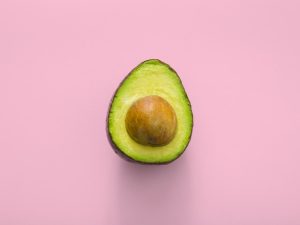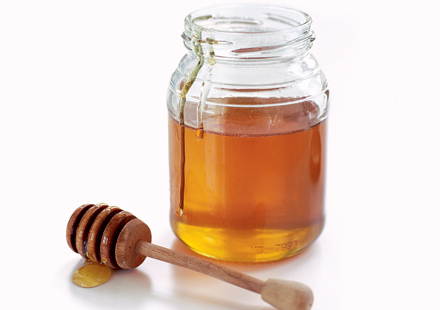Introducing Solid Foods: The Beginning
It’s 1:20 in the morning, and I’ve just finished making 5 batches of abelskivers for my 2nd grade son’s Danish festival tomorrow – as in, Denmark, not the pastry (and 6 batches if you count the batch my husband polished off single-handedly). I’m not Danish, so there was quite a learning curve. Ugh. Did I say that? I meant…yum.
I’m thinking this means I’m done with all mama-related responsibilities for a while and it’s time to settle in for a bath and a cup of tea before bed — and then I realize that I’ve only fulfilled my food-related duties toward boy #1 — and boy #2’s needs are a lot more difficult than Danish pancakes. First of all, there’s the 2am feeding — which I love, I don’t mind it at all, but then there’s the 4 o’clock and the 6 o’clock lately too, which is new. The boy is HUNGRY.
He’s also angry, or at least super-duper ornery, every time I sit down to eat anything, snack, dinner, whatever. He grabs for it, he fusses. Also new. And he’s one week away from six months old. Generally, babies hit a growth spurt around 6-7 months, that may not coincidentally coincide with pediatricians’ recommendation to begin the introduction of solids around this time. I don’t ever think there’s a rush on this, but… ever heard the expression, “don’t watch the calendar – watch the baby?” You’d never know it to look at my chubby cherub, but it’s just about time, and he’s telling me so.
 Where to begin? I’ve compiled my five most essential pointers for starting baby on solid foods, plus a sixth pointer you’ll thank me for, I promise. And stay tuned for Recipe Weekend, which will almost certainly include recipes for baby’s first solids in the near future. That or homemade handsoap, inspired by my current case of post-Danish-pancake dishpan hands.
Where to begin? I’ve compiled my five most essential pointers for starting baby on solid foods, plus a sixth pointer you’ll thank me for, I promise. And stay tuned for Recipe Weekend, which will almost certainly include recipes for baby’s first solids in the near future. That or homemade handsoap, inspired by my current case of post-Danish-pancake dishpan hands.
1. Commit to making your own food for baby — at least some of the time. I’ve decided to make my own food this time around — in spite of the fact that the abelskivers have darn near worn me out for the week, and I’m no lover of the kitchen. I’m going to brave it anyway for a number of reasons. First off, I’m a control freak — not universally, I hope — but certainly when it comes to what ingredients start my baby’s eating experience. This is going to be a lifelong relationship, and I want it started on a strong foundation, especially for a pristine, still developing digestive system. I want organic, fresh and seasonal. It has more fiber, higher vitamin and mineral content, and less additives than even the best jarred foods on the market. This makes sense to me. The first thing I’d recommend to a mama whose baby gets constipated after starting solids (provided the baby is six months old and starting with easy-to-digest starter foods) is to try making a batch or two at home and see what happens. Anecdotally speaking, homemade can clear things up faster than many moms can imagine.
The second reason is taste. There are a number of organic baby food options on the market now, and in a pinch I’ve always been grateful, but the taste of jar food just can’t compete in texture or flavor to fresh food. The relationship to food that emerges from these first ‘meals’ is an incredibly formative one. I want natural tastes that will support baby’s constitution by being not only simple, but seasonal. There’s a reason nature gives us root veggies in the winter, and summer squash in the summer. We need denser, heavier foods when the weather gets cool, and lighter, more hydrating options when the weather is warm. I want to honor that for baby as much as I honor it for the rest of the family.
Worried that making your own is too difficult or time-consuming? So am I, but with the Baby Beaba my mom-in-law gifted me — stay tuned for future blogs — and these great websites as references, (please, let my baby food look as pretty as this!), I’m feeling empowered.
2. Decide what baby’s first foods will be — and learn the Rule of 4. Is your baby 6 months of age or younger? Look to avocados, bananas, summer squash, green beans, sweet potato, acorn squash, apple, and pear as appropriate starter foods. You can also start with rice, barley, or oatmeal, as these grains tend to be the least allergenic, but my personal preference is to start with avocado. It is nutrient-dense, mild-tasting, and chock full of the monounsaturated fats baby needs for a growing brain and body. It isn’t overly sweet, which is good acclimation for baby’s tastebuds – while breastmilk is sweet, its nice to acclimate baby’s tastebuds to other flavors. Avocado is also appropriate to eat raw — avocados and bananas are really the only foods that fit this bill in the beginning — which keeps me out of the kitchen temporarily. Again, I’m packing the diaper bag at 1am after my Danish baking spree, so I’d rather just throw in an avocado, a bowl, and a spoon to mush it up. And the Rule of 4: wait at least 4 days after introducing one food to introduce another. This allows you to see how baby responds to the new food – can they digest it? Do they like it? Does it cause mouth rash, fussiness, constipation? These are signs that baby may be allergic or simply not ready yet for this food. It’s important to start slow in the beginning.
3. Stay Committed to Nursing or Formula. After the first taste of solids for baby, I know it’s tempting to give them the variety we’d want for ourselves (and give ourselves a break from pumping – anyone else out there feel this way?), but breast milk –or formula — is still baby’s mainstay in terms of optimal nutrition for the first year. Breastmilk or high-quality formula provides them with absolutely everything they need for brain and body growth, solid foods are meant to be the icing on the cake, so to speak. So in your solids enthusiasm, remember to nurse baby first, before feeding them. Their stomachs are the size of their little fists after all, so fill it with what they need before anything else. My son may be reaching for our plates, but when offered the breast as an alternative, he never complains. 🙂
4. Introduce Solids, but Not Liquids. I didn’t know this starting out, but if you’re nursing, babies get absolutely all the hydration they need from your breastmilk. In fact, water in excess of 2-3oz (even swallowed pool water), can throw off their little bodies’ sodium balance, causing a condition called water intoxication. Irritability, drowsiness, confusion, even seizures can ensue. Babies‘ kidneys aren’t fully matured, and will dump necessary sodium along with the excess water. The rules are a little different for formula-fed babies, but the essence is the same — unless advised otherwise by your pediatrician, no water on the side. And definitely no dairy — at least, not until after the first year. Milk hinders the absorption of iron, which is very important for baby, with high levels of protein and sodium is incredibly difficult to digest, and additionally is a very common allergen, especially in immature systems. (While I wish that more options were available in formula, formulas that use dairy as a base have predigested proteins, making it far easier and more appropriate for baby.)
5. Watch Baby’s Cues. Just like “don’t watch the calendar, watch the baby,” stay attuned to baby’s signs as you embark on this culinary adventure. A meal may be no more than 1-3 Tablespoons, sometimes even less in the beginning. This is perfectly natural for that tiny fist-size tummy. This is also the perfect opportunity to support baby in learning lifelong lessons in portion control. How many of us stop eating when we’re no longer hungry? In the beginning, that’s our instinct, and some pediatric experts believe that this innate ability to monitor our own hunger and satiety carries through even into our adulthood. If baby is turning his or her head away when the food approaches, or closes lips tight, or cries/fusses to get out of his high chair, take pains to listen up. Mealtime is probably over.
6. An optional 6th hint you’ll thank me for: Don’t forget the bibs. Or your older son may entreat you to drive all the way home again for fear that baby is going to ruin his matching shirt. And you’ll find yourself wondering if Soapnuts are going to cut it on what looks like a full avocado smeared onto the outfit. Really, just don’t do it.


